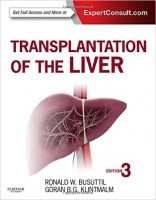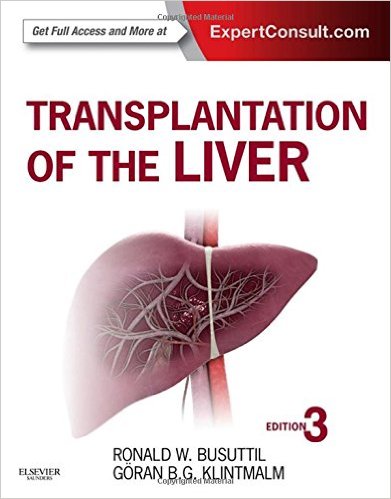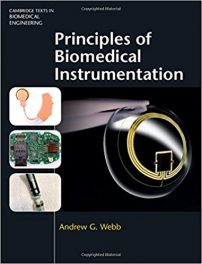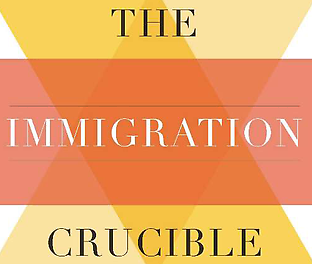 Editors: Ronald W. Busuttil, MD; and Goran B.G. Klintmalm, MD
Editors: Ronald W. Busuttil, MD; and Goran B.G. Klintmalm, MD
Publisher: Elsevier Saunders – 1,538 pages
Book Review by: Nano Khilnani
The first liver transplant was performed in 1952 by Vittorio Staudacher at the University of Milan in Italy. It was on a dog. The first transplant of a liver on a human was done on March 01,1963 by Dr. T.E. Starzl at the University of Colorado in Denver, but the recipient, who had the liver disease biliary atresia, died from intra-operative bleeding.
A second liver transplant on a human, which was a success, was also done by Dr. Starzl on May 05. The patient lived for 22 days but eventually died due to pulmonary emboli and sepsis. After that he performed two more operations shortly after o n June 03 and July 10, but the patients survived for only seven and six days respectively. The first one died of pulmonary emboli, and the second one of pulmonary emboli and liver failure.
Dr. Starzl performed a fifth operation in 1963. That was on October 04, but again the patient died of the same causes as the second one. Two other doctors – F.D. Moore and J. Demirleau – performed human liver transplants: the first, Moore, on September 16 that same year, and Demirleau sometime in January 1964, with exact date unknown.
With many failures and lack of information and experience on how to avoid them, a self-imposed moratorium on liver transplants at the University of Colorado went into effect and lasted for four years. In July 1967, with advances in immunosuppression and improvements in organ preservation, the idea of liver transplants was revived.
At that time also Carl Gustav Groth, a two-year National Institutes of Health fellow from Stockholm, who had a PhD in rheology -the study of the follow of matter – joined the transplant team, as he had knowledge of blood flow and coagulation. He helped overcome the clotting issues that had caused transplant failures several times.
In July 1967 the Starzl team performed a liver transplant on Julie Rodriguez, an 18-month-old girl with hepatoblastoma. They tried a triple-drug cocktail that had been used in successful kidney transplants around that time. The girl lived for 400 days after her successful surgery, but she succumbed to metastatic recurrence. That marked the beginning of many successful liver transplants, wherein the patients lived for longer and longer periods.
Liver transplantation has come a long way since 1963 and 1967. Today, about 50 years later, it is considered “the definitive treatment for liver failure, both acute and chronic” write the editors. It is also the successful option for hepatocellular carcinoma in adults and children. Much has been learned by liver transplant surgeons, and their knowledge, experience, and insight is incorporated in this volume for your benefit.
Two hundred and ten people, mostly MDs and PhDs, from the United States and 11 countries – Austria, France, Germany, Hong Kong, Japan, the Netherlands, South Korea, Spain, Sweden, Switzerland, and the United Kingdom – contributed content for this massive book with 107 chapters. It consists of 13 Parts, namely:
- General Considerations
- Patient Evaluation: Adult
- Patient Evaluation: Pediatric
- Special Considerations in Patient Evaluation
- Operation
- Split and Living Donor Transplantation
- Unusual Operative Problems
- Postoperative Care
- Transplant Pathology
- Immunology of Liver Transplantation
- Immunosuppression
- Survival and Results
- Future Developments in Liver Transplantation
To get access to the contents of this book and other information online, first redeem your PIN from the inside front cover of the book. Here’s what you do:
- Login or Sign Up at www.ExpertConsult.com
- Scratch off the gray stickler on the inside from cover to get your PIN code
- Enter PIN into the Redeem a Book Code box at the above website
- Click Redeem
- Go to My Library
Once you have logged in, these are the innovative features available to you online:
- Seamless, real-time integration between devices
- Straightforward navigation and search
- Notes and highlights sharing with other users through social media
- Enhanced images with annotations, labels, and hot spots for zooming on specific details
- Live streaming video and animations
- Self-assessment tools such as questions embedded within the text and multiple-format quizzes. *Some features vary by title
This book offers you current protocols, surgical approaches, and techniques used in liver transplantation. It is a compendium of information from more than 200 of today’s top experts around the world in this medical and surgical specialty. It is a single source for authoritative, current guidance on the complex subject of liver transplantation.
Some of the specific benefits you will derive from ownership of this book are:
- Overcome your toughest challenges in liver transplantation.
- Stay current in your field and optimize patient outcomes with coverage of the most recent advances in living donor transplantation, pediatric transplantation, and gene and stem cell therapy.
- Access the latest information on anti-rejection / immunosuppressive drugs, as well as comprehensive discussions of each drug or combination of drugs used to suppress the immune system.
- Effortlessly search the entire text online at www.expertconsult.com
You can get even more valuable information online from an allied website – www.ClinicalKey.com. This search engine of Elsevier Saunders is specially designed for doctors by providing them:
- Comprehensive Content – the most current, evidence-based answers available for every medical and surgical specialty.
- Trusted Answers – content supplied by Elsevier, the world’s leading provider of health and science information.
- Unrivaled Speed to Answer – faster, more relevant clinical answers, so you can spend less time searching and more time caring for your patients.
This book is a rare gem – comprehensive, almost encyclopedic in scope, and highly authoritative with more than 200 medical doctors and other experts as contributors to its contents on a highly complex and detailed medical and surgical specialty – liver transplantation. It is essential to have, for anyone in this field.
Editors:
Ronald W. Busuttil, MD, PhD is William P. Longmire, Jr. Chair in Surgery, Distinguished Professor and Executive Chairman of the University of California Los Angeles (UCLA) Department of Surgery; and Chief of the Division of Liver and Pancreas Transplantation at David Geffen School of Medicine at UCLA in Los Angeles, California.
Goran B.G. Klintmalm, MD, PhD is Chief and Chairman of Annette C. and Harold C. Simmons Transplant Institute, W.W. Caruth Chair in Organ Transplant Immunology, and Professor of Surgery at Texas A&M College of Medicine in Dallas, Texas. He is also Vice Chair of its Department of Surgery and Division Chief of Transplant Surgery.







